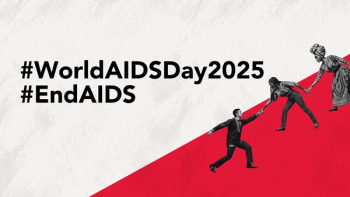
Predicting Mortality in HIV-Associated Cryptococcal Meningitis
Study proves the role of harnessing CrAgSQ for management over the infection.
Cryptococcal meningitis (CM) is responsible for 19% of deaths related to HIV, with a 10-week mortality rate ranging from 25% to 45% under current treatment regimes. It is caused by the fungus Cryptococcus. Testing for cryptococcal antigen (CrAg) is an important diagnostic tool for identifying cryptococcal infections. Treatment based on risk stratification at diagnosis could potentially lower mortality rates. CrAg Semi-Quantitative (CrAgSQ) shows promise as a predictive instrument for predicting 2-week mortality in HIV-CM patients, presenting itself as a feasible choice for RLS. Additional studies are needed to determine its potential for stratifying management strategies in patients with HIV-CM.
There was a positive correlation between the CrAgSQ scores in plasma and cerebrospinal fluid (CSF) and the quantitative fungal cultures (QFCs). A significant association was observed between higher CrAgSQ scores in plasma and increased mortality at 2 and 10 weeks. Specifically, mortality rates were 0% (0/22) for those with a plasma SQ) score of 1, 4.4% (1/23) for score 2, 13.9% (75/540) for score 3, and 34.55% (19/55) for score 4 (p for trend <0.001).
The IMMY CrAgSQ represents an enhancement over the widely utilized IMMY CrAg LFA, offering an SQ score with similar diagnostic efficacy. Prior research with fewer HIV-CM patients did not conclusively assess CrAgSQ's ability to predict mortality. To address this, the study analyzed stored plasma and CSF samples from the Ambition trial presented at the
The Ambition Phase 3 randomized clinical trial, aimed at evaluating CM therapy, enrolled 810 patients diagnosed with HIV-CM across Botswana, Zimbabwe, Malawi, Uganda, and South Africa. Plasma and CSF samples, collected at the time of diagnosis before any treatment was administered, were analyzed using CrAgSQ, producing scores ranging from 1 to 5.
A total of 756 CSF and 745 plasma samples were evaluated from 796 patients participating in the trial, 61% were male, with a median age of 37 years (IQR 32-43), and a median CD4 count of 27 cells/uL (IQR 10-58). The mortality rates were 13% at 2 weeks and 23% at 10 weeks.
Over a follow-up period of 10 weeks, the clinical outcomes and laboratory data were recorded. The study investigated the relationship between the CrAgSQ scores obtained from plasma and CSF samples and mortality rates at 2 weeks and 10 weeks.
In the plasma samples, 0.13% (1/745) tested negative, 4.03% (30/745) received an SQ score of 1, 3.49% (26/745) scored 2, 83.62% (623/745) scored 3, and 8.72% (65/745) scored 4. For the CSF samples, 1.32% (10/756) were negative, 7.01% (53/756) scored 1, 5.69% (43/756) scored 2, 63.76% (482/756) scored 3, and 22.22% (168/756) scored 4.
CM is a significant predictor of mortality in high fungal burden; however, measuring fungal loads traditionally requires serial CrAg LFA dilutions or QFC, which are time-consuming, require specialized skills, and are challenging to implement in resource-limited settings.
Reference
Boyd K, Maskill O, Doyle R, et. al. Semi-Quantitative Cryptococcal Antigen Testing and Mortality in HIV-Related Cryptococcal Meningitis F. poster #893 presented at CROI 2024. March 3-6, 2023. Denver, CO.
Newsletter
Stay ahead of emerging infectious disease threats with expert insights and breaking research. Subscribe now to get updates delivered straight to your inbox.



















































































































































































































































































